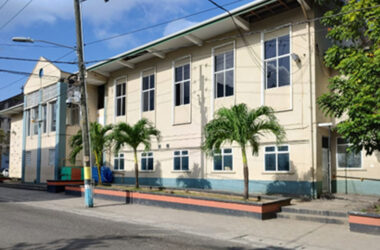This week was a very important one for the nation. Not only did the Opposition and the Government appear to be jointly supporting calls for Saint Lucia to become a republic, but Saint Lucians got a glimpse of what government intends to do with the EC$1.8 billion it plans to spend for the fiscal year May 2022 – April 2023.
The budget address, which was delivered by Prime Minister Philip J Pierre on Tuesday of this week, outlined how that EC$1.8 billion amount is to be sourced and how much money will be spent on the various ministries, projects and other areas.
This budgeted amount is not all sitting in cash in the coffers of government. It is an amount government is hoping to spend taking several factors into consideration, such as the willingness of friendly governments and banks to give grants with no strings attached, and loans with low interest rates, as well as the ability to earn certain amounts from various streams of taxation.
Most times, if not all the time, such budgetary projections fall short of their mark resulting in what is known as a deficit budget, meaning expenditures exceed revenues. Not enough monies coming in from government’s projected revenue streams for any fiscal year, puts government in a bind as to the fulfillment of its promises to the people.
This government already has indicated a budget shortfall of about EC$500 million for this fiscal year, an amount it claimed, which will have to be borrowed if it intends to meet its budgetary obligations.
We can’t recall a government ever presenting a balanced budget for any fiscal year in recent times past. And by balanced we mean projected expenditures being equal to projected revenues. Neither can we recall a government ever presenting to Saint Lucians a surplus budget, meaning a budget where revenues exceed expenditures.
The presentation of an annual budget by a government is critical, as it gives Saint Lucians an idea as to how the government of the day intends to use their tax dollars – how many tax dollars are to be collected and how much is allocated to keep government functioning (recurrent expenditure) and how much is to be spent on development of the country (capital expenditure).
The annual budget presentation by a government also acts as a benchmark against which the people can measure the progress, or lack thereof, of a government, not only on how this government or that government manages the money it borrows or receives from taxation and from friendly governments, but how much of these monies are tracked to do the good they have been projected for.
Such budget presentations can show the type of government the people elected into office by way of how it plans to reallocate resources to encourage investments, how it intends to reduce inequalities in income and wealth through its policies, and how it intends to achieve economic stability and economic growth.
Sadly, not enough Saint Lucians are keen followers of annual budgets presented by successive governments, and so are unable to fairly hold government accountable, resorting to the narrative of the political party they support should they decide to speak on government’s stewardship.
The government, this week, presented to the public its projected vision as contained in its budget for the fiscal year 2022/2023. Whether this will morph into the government’s favourite chant of putting people first is a different ball game, as some things are easier said than done.
Budget addresses delivered by the country’s Ministers for Finance, lay out government’s projected income and expenditure, therefore It is important for Saint Lucians to call for transparency in how government deals with such large sums.














